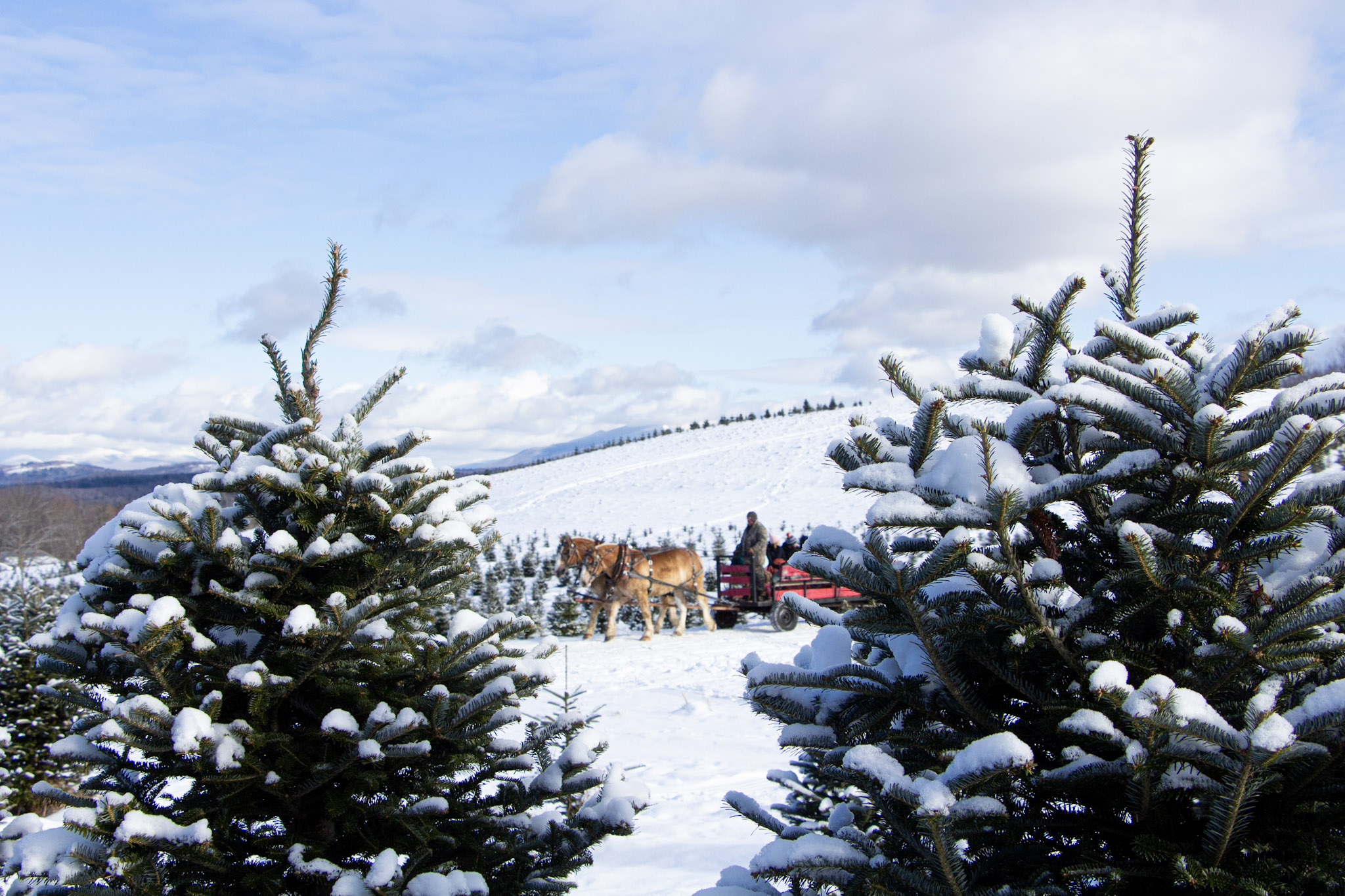Riparian forests provide specialized nursery habitat for nesting birds
- Tags:
- Conservation Center
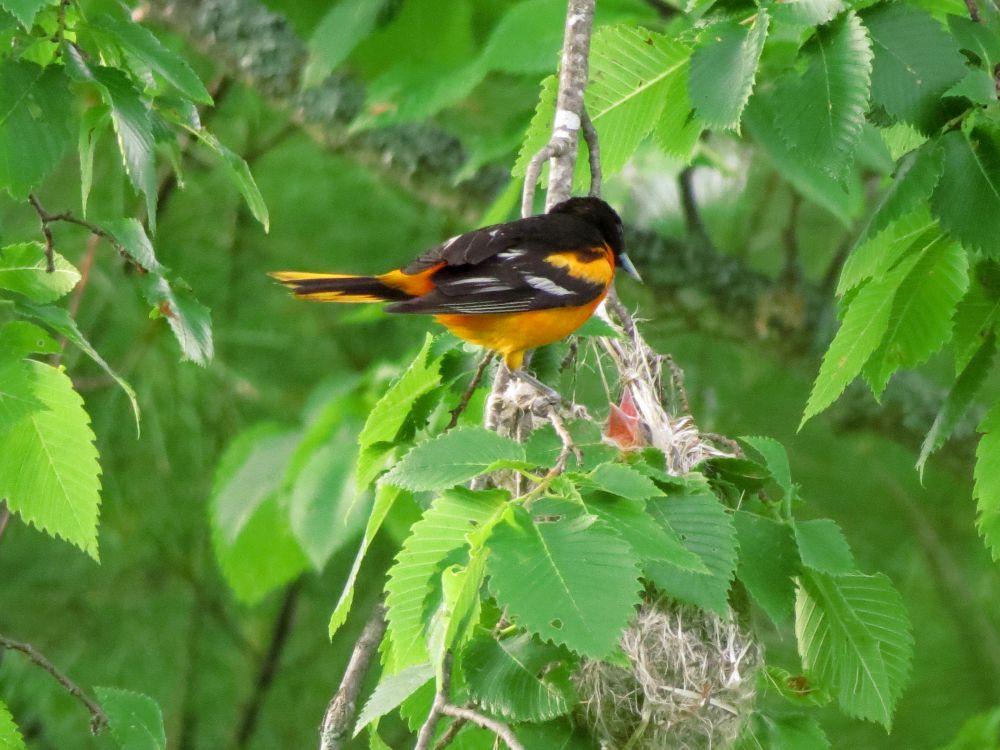
A male oriole helps feed a brood of hungry chicks this week at Merrimack River floodplain. Photo by Ellen Kenny.
Along the Merrimack River, the plants and animals adapted to river's edge, or "riparian","forest habitats are on display.
Think about how natural patterns repeat: Certain animals are found in specific habitats at certain times of year either feeding on, or nesting in certain types of vegetation. Adaptation and recurring associations of flora and fauna to specific habitats and features are key concepts of ecology.
Tree species adapted to occur on the rich alluvial soils of riverine floodplain forests in southern NH include the familiar and common red maple, white ash and sugar maple forest type. There are more specialized floodplain forests of silver maple, American elm, Green ash, and Syccamore trees which historically grew in mature gallery forests along the banks of the State of New Hampshire's major rivers. Some early European accounts of paddling or travel into interior regions suggest the branches of trees growing along the banks would interlace, creating a leafy ceiling above narrow, deep stretches of quiet water. Tall trees fell into rivers creating treacherous "strainers" through wihich the river current would weave. Today its hard to imagine that jungle effect and how different it must have felt to paddle beneath a closed canopy, in deep shade along tributaries of major rivers in NH.
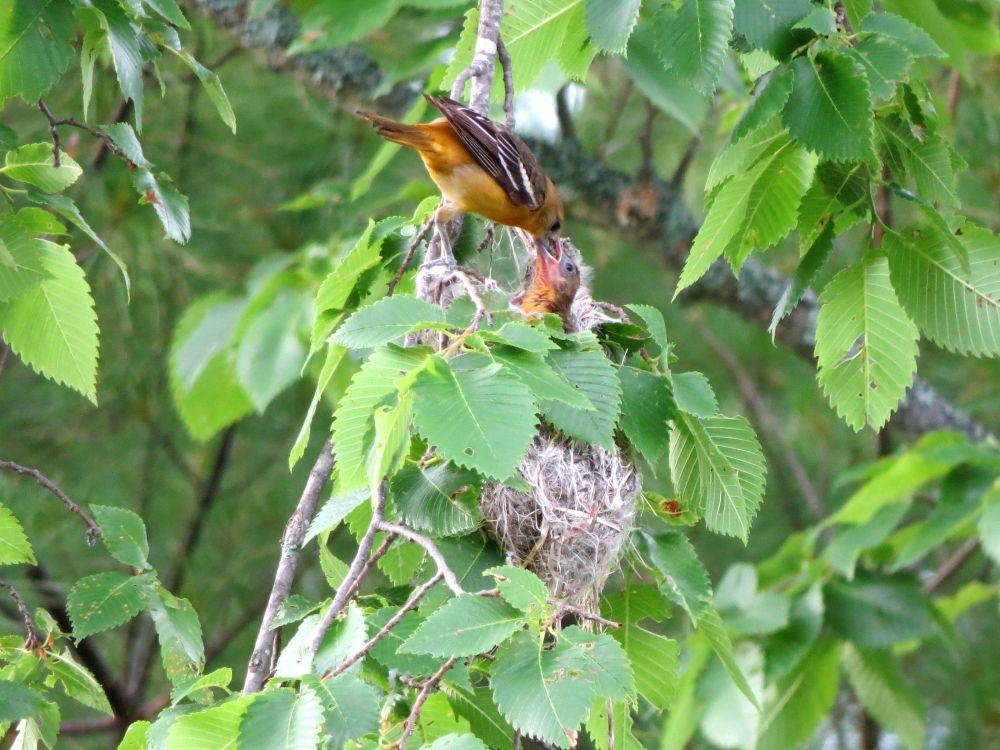
Examples of birds found nesting today along the Merrimack River include some that have specifically adapted to life along the riverbanks or in the specialized forests found growing there.
Examples include both bank swallows and kingfishers - both of which have adapted to nest in deep burrows tunnelled in the sandy-silt of the steep-cut riverbanks. Cavity nesting chickadees, titmice, nuthatches and woodpeckers nest in standing dead snags found in the beaver impounded marshes along the river including the wetlands of Mill Brook here in Concord. Wading birds include fish- and frog-eating great blue herons and green herons. Ducks also nesting in hollow tree cavities include wood ducks and hooded mergansers. Fish-eating birds include common mergansers and bald eagles.
Other frequent flyers in rich riverside woods include colorful neotropical migrant warblers, vireos, tanangers, and thrushes - particularly Veerys . Riparian forests are rich in insect protein including moths, caterpillars, mayflies, caddis flies, and the blood-sucking mosquitos and deer flies. Any evening hike in a forested swamp quickly reveals the wealth of insects living near water. Watery lowland wetland habitats provide aquatic insects with humid, less-windy, sheltered forests.
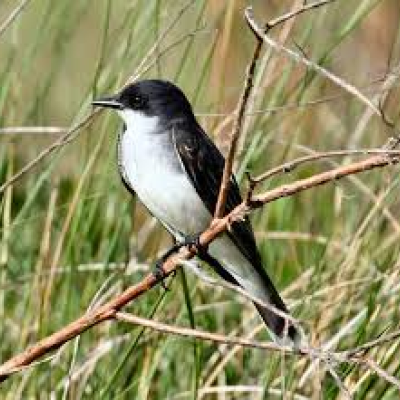
Two special riverside nesting birds are Eastern Kingbirds and Baltimore Orioles.
Eastern kingbirds are both audacious and aptly-named. Kingbird nests are located overhanging water - they are often conspicuous and exposed in open branches overhanging banks of rivers and streams or along lake and pond shores. Nesting over water increases risks of drowing when nestlings fledge but decrease rates of predation by tree-climbing weasels, racoons or snakes. Kingbirds frequently incorporate dried snakeskins into their nesting materials to dissuade predation by other birds or mice, chipmunks and red squirrels which react negatively to the scent of a snake predator. A clever adaptation for a species whose nests are not particularly well-hidden.
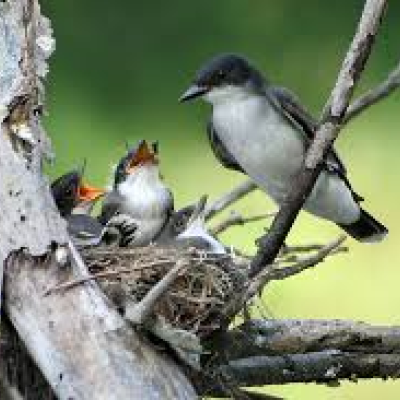
I saw a kingbird harass and seemingly ride on the back of an immense, egg- or nestling-scavenging bald eagle to drive it away from the viscinity of its nest. The effect was like seeing the space shuttle riding on the back of a commercial 747 jet adapted to transport the shuttle! It's Latin name says it all: "Tyrannus tyrannus." Tyrannical kingbirds take no prisoners and tolerate no predators while nesting.
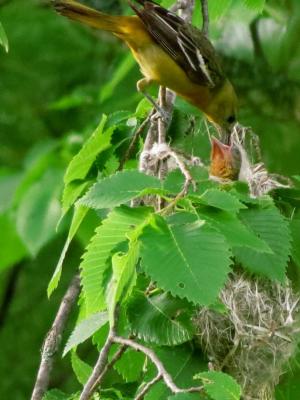
Baltimore orioles are well-adapted and also favor nesting in riparian forest habitats. These photos taken by Ellen Kenny at the Forest Society Merrimack River Outdoor Education and Conservation Area show a pair of Baltimore orioles nesting in a slippery elm with its distinctive jagged, serrated leaves. Orioles famously construct a hanging, pedulous nest - like a hammock - suspended from a branch. Often the nest is constructed over water or wetlands like the kingbird nests to reduce the number of tree climbing predators.
Young nestling orioles are raised in a suspended hammock of lichens and moss and lined with soft grasses, swaying gently in the summer breeze along the banks of a forested river or wetland.
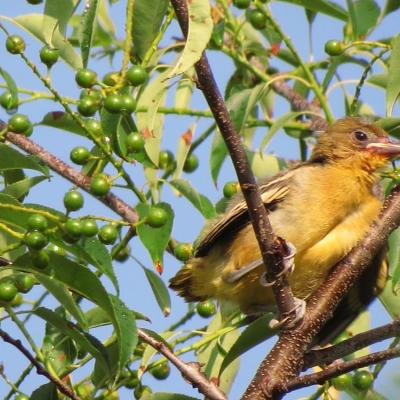
Not a bad neigborhood if you ask me...
... Sing it like Van Halen "And the cradle will ROCK, yes the cradle, cradle will rock..."
Rock on, Baltimore Orioles!
